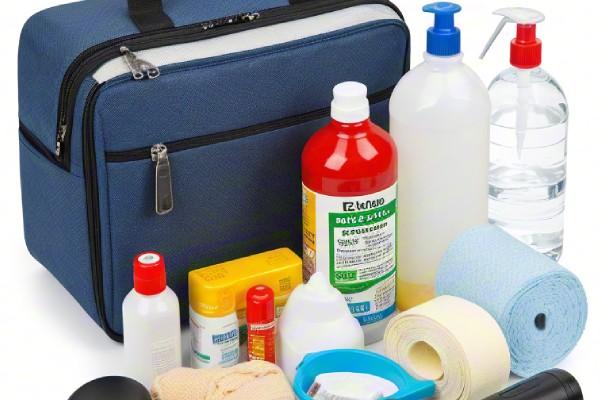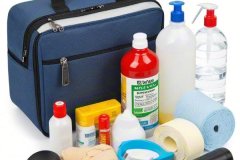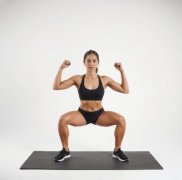How to build an emergency family first aid kit
Building an emergency family first aid kit is an essential step in ensuring that you can provide immediate care in the event of an injury or medical emergency. A well-stocked first aid kit can make all the difference in critical situations. Below is a guide on how to create a high-quality, comprehensive first aid kit for your family.

1. Basic Supplies
These items form the backbone of your first aid kit and should be stocked in adequate amounts.
- Adhesive Bandages (various sizes) – For small cuts, blisters, or abrasions.
- Sterile Gauze Pads – To dress larger wounds and control bleeding.
- Adhesive Tape – To secure gauze pads and bandages.
- Antiseptic Wipes or Solution – To disinfect wounds and prevent infection.
- Cotton Balls or Swabs – Useful for applying antiseptics or cleaning wounds.
- Elastic Bandage (like an Ace bandage) – For sprains or strains, or to hold gauze in place.
- Antibiotic Ointment – To prevent infections in minor cuts and abrasions.
- Burn Cream or Gel – For treating burns and scalds.
- Hydrocortisone Cream – To relieve skin irritations, rashes, or allergic reactions.
- Sterile Eye Wash or Saline Solution – To rinse out the eyes in case of exposure to foreign objects or chemicals.
2. Medications
Include a variety of over-the-counter (OTC) medications to treat common health issues.
- Pain Relievers – Aspirin, ibuprofen, or acetaminophen for pain relief and fever reduction.
- Antihistamines – For allergic reactions or hay fever (e.g., Benadryl).
- Antacids – For heartburn or indigestion relief.
- Antidiarrheal Medication – To treat upset stomach or diarrhea.
- Tweezers – For removing splinters, ticks, or stingers.
- Scissors – To cut bandages, tape, or clothing.
- Thermometer – A basic digital thermometer for checking body temperature.
3. Specialized Items for Family Needs
Tailor your kit to suit the specific needs of your family members. This may include:
- Prescriptions – Any necessary medication that a family member takes regularly (e.g., asthma inhalers, epinephrine auto-injectors).
- Baby Care Items – If you have infants, include baby aspirin, diapers, baby wipes, and teething gel.
- Sunscreen – To protect against sunburns.
- Lip Balm with SPF – For protecting lips from chapping or burns.
4. First Aid Tools
- Instant Cold Pack – To reduce swelling or numb pain.
- Instant Heat Pack – For muscle aches or warmth.
- CPR Face Shield or Mask – For performing CPR safely.
- First Aid Manual – A basic manual with guidelines on treating common injuries, CPR instructions, and emergency contacts.
- Latex or Nitrile Gloves – To protect yourself when administering first aid.
5. Additional Items
These supplies can be helpful in specific situations and can help with comfort or care during an emergency.
- Flashlight with Extra Batteries – For power outages or when you need to work in low light.
- Multi-tool – A versatile tool that could be useful for cutting, opening bottles, or other tasks.
- Thermal Blanket – To keep someone warm in case of shock or hypothermia.
- First Aid Instruction Card – A quick reference guide to common injuries or conditions.
6. Packaging and Storage
Keep your first aid kit in a sturdy, waterproof container that is easy to carry and store. Organize items in clear plastic bags or compartments so they are easy to find when needed. Make sure everyone in the household knows where the kit is kept and is familiar with the basic contents.
7. Maintenance
Regularly check the contents of your first aid kit to ensure nothing is expired or missing. Restock items as needed, and review the list to make sure it still meets your family’s needs. It’s also a good idea to practice basic first aid and CPR with your family so everyone feels confident in using the kit if needed.
Conclusion
Creating an emergency family first aid kit requires thoughtful planning and the right supplies to address a wide range of potential situations. By assembling a comprehensive kit and maintaining it regularly, you are taking a proactive step in ensuring the safety and well-being of your loved ones.
A well-stocked first aid kit is crucial for managing minor injuries, illnesses, and emergencies. Here’s a list of 20 essential items to include in your first aid kit:
1. Adhesive Bandages (Band-Aids)
For covering small cuts, scrapes, blisters, and abrasions. Have various sizes for different needs.
2. Sterile Gauze Pads
For covering larger wounds and helping to control bleeding.
3. Adhesive Tape
To secure gauze pads, bandages, or other dressing materials in place.
4. Antiseptic Wipes
Used to clean wounds and prevent infection before dressing.
5. Antibiotic Ointment
To apply to minor cuts and scrapes to prevent bacterial infections.
6. Elastic Bandage (Ace Bandage)
For wrapping sprains, strains, or securing a dressing.
7. Hydrocortisone Cream
To treat rashes, skin irritations, or allergic reactions.
8. Burn Cream or Gel
For treating minor burns and sunburns.
9. Tweezers
Useful for removing splinters, ticks, or other foreign objects from the skin.
10. Scissors
For cutting tape, bandages, or clothing when necessary.
11. Thermometer
To check for fever or monitor body temperature in case of illness.
12. Pain Relievers
Include over-the-counter options like ibuprofen, acetaminophen, or aspirin to relieve pain or reduce fever.
13. Antihistamines
To treat allergic reactions, hay fever, or mild allergic skin rashes.
14. Instant Cold Pack
To reduce swelling, numb pain, or treat sprains, strains, or bruises.
15. Instant Heat Pack
Useful for muscle aches, stiffness, or to provide warmth in cold conditions.
16. CPR Face Shield
For performing CPR safely without direct contact during an emergency situation.
17. Latex or Nitrile Gloves
For protecting yourself and others while administering first aid.
18. First Aid Manual or Instruction Card
A guide to common injuries and first aid techniques for easy reference.
19. Alcohol Pads
For disinfecting the skin, tools, or preparing a wound for bandaging.
20. First Aid Tape
Specially designed tape to secure bandages, gauze pads, or other dressing materials to wounds.
Final Thoughts
These 20 items are the foundation of a versatile first aid kit. Depending on your specific needs (family size, activity level, location), you may want to add additional supplies like prescription medications, insect repellent, or a splint. Ensure your kit is easy to access, regularly checked for expired or used items, and that everyone in your household is familiar with its contents.





